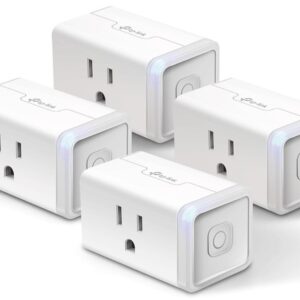The 2024 CES (Consumer Electronics Show) proved that television manufacturers will continue to create increasingly expansive screen size options. Compared to a few years ago, the difference now is that some of these super-sized screens have breached affordability for more consumers. There are practical reasons to consider a larger screen size for your home theater setup. And while only some have the space for a TV the size of a queen-sized mattress, those considering the addition of such a beast should be aware of the shortcomings of the largest displays available today.
WHY GO BIG?
To perceive all of the fine details in your video material of choice, you need a screen size appropriate for your viewing distance. With 4K video viewed at 10 feet, a 100-inch screen would be an ideal starting point for someone with average vision to appreciate reference-level detail. Screens that large or even larger used to be the exclusive domain of projection setups, but nowadays, several manufacturers of LCD TVs offer options in the 98 to 100-inch range that will deliver a bright and well-contrasted picture in room environments that no consumer projector can match. Hisense recently introduced the 100-inch 100U8K 4K television with outstanding brightness and quantum dot color for a street price of $3500. Samsung Electronics offers a 98-inch Q80C QLED 4K television that’s received solid reviews for a discounted price of just under $5000.

Another reason to go with a larger TV screen size is immersion. THX home theater guidelines suggest a video display encompassing an approximate 40-degree viewing angle to the viewer, calculated by multiplying the viewing distance (in inches) by 0.835 to determine an ideal screen size. This calculation would make a 100-inch screen perfect for a 12-foot viewing distance. More practically speaking, THX’s guidance is a good reminder to consider sizing up your next TV to provide a more cinematic viewing experience. The 98-inch TCL 98QM850G features 2300 local dimming zones and up to 2000 nits of peak luminance for excellent picture contrast and brightness at a $6000 street price.
A positive side effect of the display manufacturers’ quest to craft super-sized TVs is increasing the affordability of what would have been considered a big screen option a few years ago. I ran the numbers on seven popular mid- and upper-tier television series available today, and the best price per unit area of screen size isn’t the absolute largest or smallest sizes. With a few exceptions, the 65- to 77-inch models offered the most screen real estate per dollar spent. Likewise, the largest screen sizes in this sample were also the most expensive per unit area of screen size – you’ll pay extra for big screen bragging rights.
POTENTIAL PITFALLS
The weight involved is one of the hurdles of dealing with the most massive TVs available today. A 98 to 100-inch LCD television weighs nearly 150 lbs with the base stand attached. If you include the sturdy packaging needed to protect such a large object during transport, the unit weight can exceed 200 lbs. All TVs, especially the most massive ones, require placement on a sturdy surface with appropriate anchorage that prevents tip-overs. Wall-mounting such a heavy TV will require properly rated hardware installed correctly. Depending on the final location of a super-sized TV, it may need several physically capable people to make it a safe and damage-free install.
Another consideration is that a TV model’s largest screen size option may perform differently than the smaller offerings. One example of this performance fall-off with giant screens is the premium OLED offerings from LG and Samsung. The LG G3 OLED television features an impressive brightness-enhancing technology called a meta-lens array (MLA) that is only available in 55-, 65-, and 77-inch screen sizes. The 83-inch G3 OLED lacks MLA technology and cannot achieve the brightness of its smaller siblings. Similarly, Samsung’s quantum dot OLED (QD-OLED) televisions, like the S90C and S95C, also top out at 77 inches before resorting to other panel technologies that don’t offer the same brightness and color performance.

And, in the never-ending race for the least expensive “100-inch” TV available, it shouldn’t be surprising that manufacturers will sacrifice viewing angles, picture contrast, and brightness to achieve competitive pricing.
COMING SOON
For 2024, TCL announced a 115-inch version of the well-rated QM8 series televisions (QM891G) that claim 5000 nits of light output and more than 20000 local dimming zones. Hisense also announced an updated UX model featuring a 110-inch screen size with a whopping 10000 nits of (claimed) peak light output and 40000 local dimming zones.

While there are currently almost no OLED options above 83 inches, LG announced plans to deliver several 97-inch models in 2024 as part of the C4, G4, and M4 series television lineups. While LG’s largest OLEDs will lack the aforementioned brightness-enhancing MLA technology, the company announced MLA would arrive in some of its premium 83-inch 2024 models.
8K pixel resolution is also a rarity among today’s big-screen TVs. The 98-inch Samsung Neo QLED 8K QN990C is a lone exception that quadruples the number of pixels of a 4K television for a more seamless viewing experience at closer viewing distances. However, the $40000 price tag of the QN990C may indicate the difficulty in crafting the largest screen sizes ideal for highlighting the benefits of 8K resolution.

As for practical manufacturing limits, LCD televisions are literally carved out of giant sheets of “mother glass.” The latest generation of mother glass would allow for creating a single 150-inch 16:9 TV and, maybe, some additional smaller screens to enhance manufacturing efficiency.

MicroLED display technology is an impressive-looking alternative for creating giant TVs by seamlessly tiling multiple smaller panels together. MicroLED displays are quickly maturing but remain a costly option. Currently, Samsung’s bespoke 146-inch 4K microLED TV option will set you back $220000.
Robert is a technologist with over 20 years of experience testing and evaluating consumer electronics devices, primarily focusing on commercial and home theater equipment.
Robert's expertise as an audio-visual professional derives from testing and reviewing hundreds of related products, managing a successful AV test lab, and maintaining continuous education and certifications through organizations such as CEDIA, the Imaging Science Foundation (ISF), and THX.
More recently, Robert has specialized in analyzing audio and video display systems, offering comprehensive feedback, and implementing corrective measures per industry standards. He aims to deliver an experience that reflects the artists' intent and provides coworkers and the public with clear, insightful product information.










